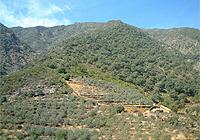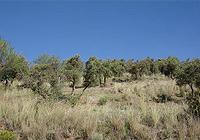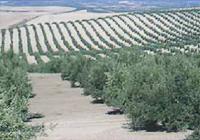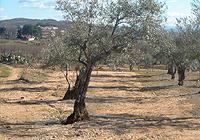Olive farming and the environment

Extremadura (Spain)
EFNCP believes that olive farming should be a model for sustainable land-use in the Mediterranean region, producing highly-valued foodstuffs while helping to maintain local communities, landscapes and biodiversity in marginal areas. But EU policies are failing to deliver this vision, despite spending over 2,000 million euros of public money on olive farming each year.

Córdoba (Spain)
Traditional, low-input types of olive farming are well placed to provide multiple public benefits, especially in upland areas where they predominate. Unfortunately this type of farming, mostly on very small holdings, generates almost no income under the current market and policy framework. Understandably, farmers intensify their production in the hope of improved income, or increasingly they choose abandonment as a simpler option.

(Spain)
Both paths lead to major environmental losses. Abandonment of low-input olive farming leads to the loss of open habitats of great value for some of our declining species, such as certain butterflies and reptiles. The resulting closed landscapes of dense scrub and forest are highly vulnerable to destructive wild fires, and are less attractive for rural tourism.
Intensified olive farming is a major cause of one of the biggest environmental problems affecting the EU today: widespread soil erosion and desertification in Spain, Greece, Italy and Portugal. Meanwhile the expansion of irrigated olive production is increasing the over-exploitation of water resources that have already been eroded by other agricultural sectors.
EU policy

walls in Las Hurdes, Extremadura
(Spain)
The Common Agricultural Policy (CAP) support for olive farming is part of the Single Payment System that maintains the pattern of the old production subsidies, weighted heavily in favour of the most productive irrigated systems. This results in major over-subsidisation and consequent waste of public money. Meanwhile the small amount of support going to low-intensity traditional olive farming is not enough to prevent abandonment.

widespread practice in olive groves
It is not only the environment that suffers under current policies: following years of production subsidy, intensification and expansion, producers now face market surpluses and falling prices.
The EU has made options available for Member States to redirect support under Pillar 1 of the CAP on the basis of social and environmental values, but most national governments did not take up these options, and they were recently abolished.
Member States have also made little effort in the development of agri-environment schemes to support low-intensity olive farming on a scale commensurate to the environmental challenges on the ground.
EFNCP activities and other projects
Since the 1990s, EFNCP has been at the forefront of work on the environmental implications of olive farming at the European level, and in the development of proposals for reforming the wasteful and ineffective system of CAP support. Early papers were produced in English and Spanish in 1998.
In 1999-2000 EFNCP co-ordinated a major policy study for DG ENV (then DGXI) on “The environmental impact of olive production in the EU: practical options for improving the environmental impact”. Many of the issues exposed in this study remain the same today, even though the policy context has evolved.
Drawing on EFNCP’s work, WWF and Birdlife produced detailed policy proposals for incorporating environmental considerations into a reformed CAP in 2001, with a publication in several languages.
In recent years there have been many more projects on olive farming and the environment. The EU funded the major research project Olivero, which finished in 2006, but whose policy recommendations were ignored by the EU and Member States. www.olivero.info
In France, there is an ambitious research project called ECCOLIV which includes a focus on biodiversity and landscape. The acronym stands for Eco-Culture de l’OLIVier comme une nouvelle fonctionnalité pour les reconquêtes écologique et sociétale des sols méditerranéens à l’abandon et inflammables.
The international project "Terra Olea" brings together 3 areas of South Western Europe (Baena in Spain, Mirandela in Portugal, Nîmes in France) with funding from INTERREG, the cooperation programme co-financed by the European Union. Its aim is to promote a regional identity around the olive growing heritage and to develop tourism around this theme. www.terra-olea.org
"KNOLEUM" Olive tree landscape is another INTERREG project, which aims to encourage studies to identify the links within the Mediterranean basin with olive tree landscape, and to reinforce the Mediterranean identity through the knowledge of this common olive culture. This program takes place in Andalusia (Spain), Languedoc Roussillon (France), Portugal, Lebannon, Greece, Morocco and Ombria (Italy). www.knoleum.fr
Centolimed is a LIFE project concerned specifically with HNV olive groves www.lifecentolimed.iamb.it
These initiatives have many excellent features, but they also have one vital weakness in common – they all take place against a backdrop of a poorly conceived EU policy for olive farming and its failure to halt the parallel processes of intensification and abandonment, and it is not clear how any of them will feed into improving this policy.
EFNCP is now working to develop a network of information on olive farming and the environment, focusing specifically on assessing the scale and effectiveness of current policy responses. What are the main environmental issues in each olive region? Can they be quantified? What are the tendencies?
For example, there is a clear trend for olive production to be concentrated in certain regions and under highly intensive irrigated systems, with a corresponding decline in marginal, non-irrigated production systems. What are the socio-economic challenges of maintaining a more geographically and environmentally balanced production?
And are current policies responding to environmental challenges in concrete terms? For example, what is the quantified impact of current agri-environment schemes, and are they responding to challenges at a sufficient scale?
A first selection of fiches are available for Andalucía (Spain), France and Montenegro:


